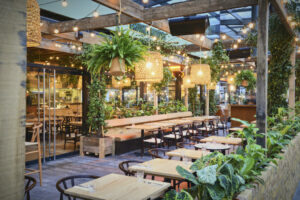Last Updated on December 5, 2025 by Emma Fajcz | Published: April 19, 2020
London is known the world over as a vibrant, historical, edgy, multicultural hub with more museums, art galleries and things to see than you can shake a stick at. But did you know that we are, in fact, two cities and 32 boroughs?
To discover them all, your best bet is a self-guided walking tour. If you’re hankering to see where it all began, start in the City of London. This is the most ancient part, where you’ll find the Tower of London and the financial district, founded by the Romans in 55 A.D.
Meanwhile, the City of Westminster is home to big hitters such as Buckingham Palace and Big Ben, a place of kings and queens that’s central to the British democracy. Want to see the Changing of the Guard? This is the city for you.
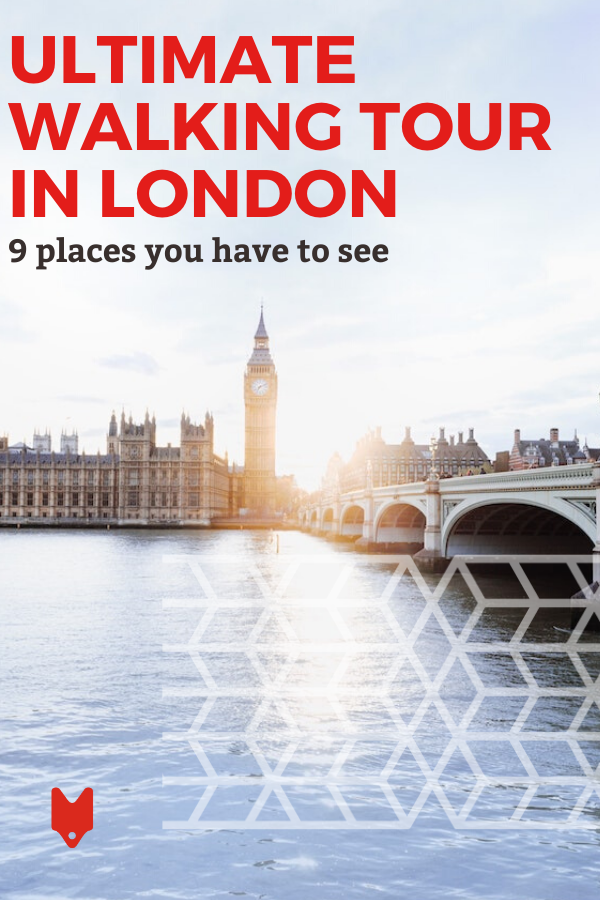
For London first-timers with only a few days to explore, it can seem a little overwhelming planning where to go and when. So here at Devour, we’ve devised the ultimate self-guided walking tour of London involving both cities, a boat ride, a guard change, an iconic clock tower and a whole lot more in just a few hours—plus some lunch suggestions for afterward.
Ready to hit the streets of London with us?
1. Tower of London (alight at the Tower Hill tube stop)
The Tower of London was built in the 1070s by William the Conqueror, who arrived from Normandy, whacked an arrow into our king’s eye and then took control of the country. The work of a succession of monarchs over hundreds of years, the tower has served as a royal mint, an observatory, a zoo, an armory, a royal palace, a treasury and an execution site for two of Henry VIII’s more unfortunate wives. It’s now home to the Beefeaters, some massive crows and the Crown Jewels.
If you’re planning to visit the inside, get there nice and early for a good look at the Crown Jewels without the crowds. It’s £26 per adult if you buy online in advance, and doors open to the public at 9 a.m.
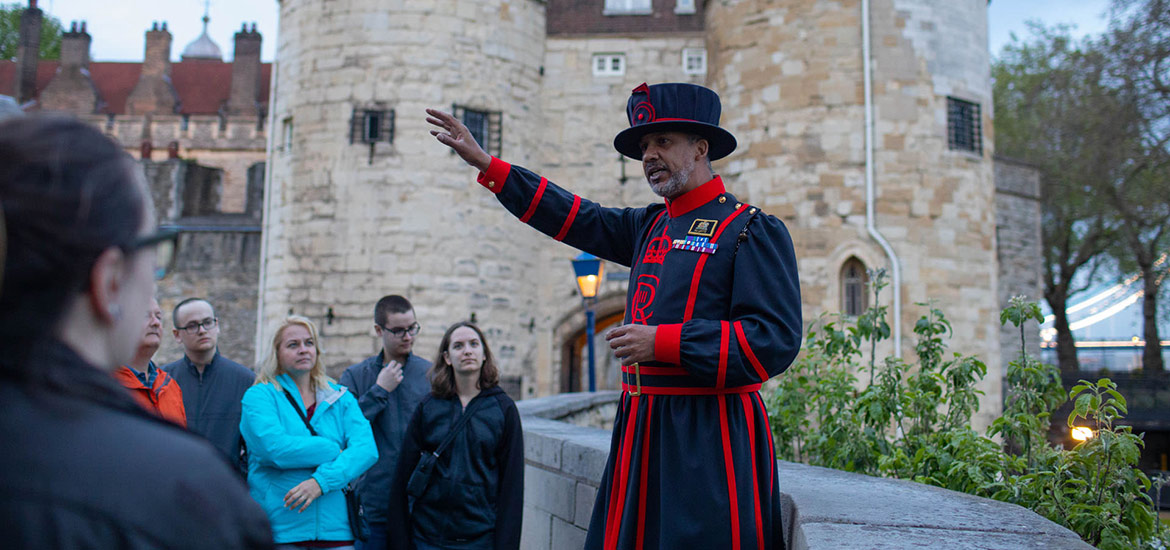
2. Tower Bridge
Just in front of the Tower of London, you’ll find Tower Bridge. Though it looks old, it’s a mere baby in comparison to the complex next to it; it only dates back to 1894.
London has 33 bridges, but this is the only one with bascules allowing the bridge to raise up to allow ships to pass through. Pretty terrifying for the driver of the Line 78 bus who, in 1952, found himself driving full throttle over the raising bridge. With no choice but to floor it, the bus jumped right over the gap and Albert Gunter got himself a day off work and £10 for his bravery.
Farther up where the river bends is Rotherhithe. In September 1620, 102 passengers set sail on a ship called the Mayflower from here—Puritans fleeing persecution for a chance at life in the New World.
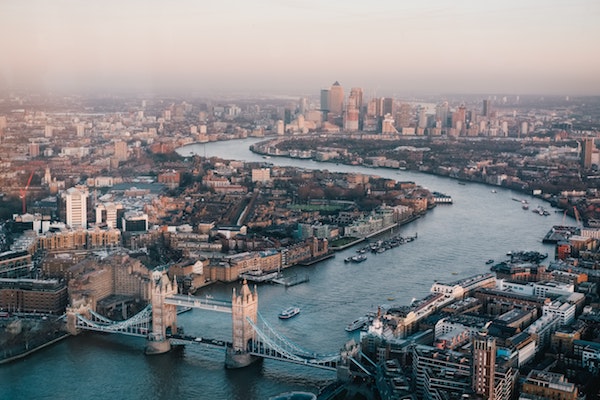
3. Boat Ride down the Thames
At the front of the tower, you’ll find the pier for the Thames Clipper river bus. Grab yourself a one-way ticket (no more than £9) from the kiosk and jump on the next boat to Westminster. The boats generally come every 20–30 minutes.
While it may seem like an unexpected addition to a self-guided walking tour in London, this is a wonderful way to see all the sights along the river in a mere 20 minutes on your way to the City of Westminster.
En route, you’ll see our warship the HMS Belfast, the Monument to the Great Fire of London, Shakespeare’s Globe, St. Paul’s Cathedral and its splendid Baroque dome, the Tate Modern (free entry and full of spectacular works from surrealism to feminist art), Somerset House and the London Eye before hopping off at Westminster Pier.
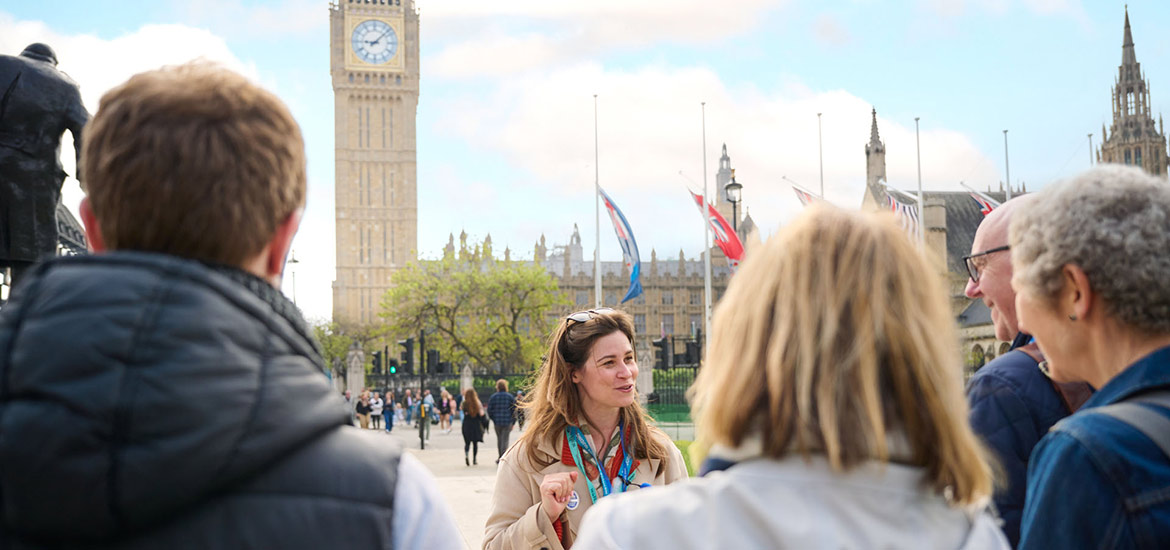
4. Houses of Parliament and Big Ben
Welcome to the absolute center of British democracy and government. The Palace of Westminster, better known nowadays at the Houses of Parliament, was originally a residence for kings. It’s split into two “houses” of Lords and Commons; the tower at the furthest end is the Victoria Tower, which houses parliamentary archives.
The tower closest to you is the one known globally as Big Ben, despite the tower itself never having been called that. Its real name is the Elizabeth Tower, and to clear up the confusion, Big Ben refers to the bell housed inside the tower, made by the same foundry as the Liberty Bell.

The area around this iconic London building is Parliament Square. The church on the far side of the square is one of the most important in Britain: Westminster Abbey. It was also built by Edward the Confessor after a pretty epic dream, and is the burial place of virtually every English royal up until the 1700s.
While it’s not free to enter, if you attend an Evensong service, you’ll get to see the interior without paying a penny!
5. Whitehall
Down this narrow street, you’ll find the road of our ministries: the Ministry of Health (the one that looks ironically like a packet of cigarettes), the Ministry of Defence, and for Harry Potter fans, even the location of the Ministry of Magic. Wizard!
On this walk you’ll also pass Churchill’s War Rooms, the Old War Office, the Banqueting House—where our former king, Charles I, lost his head years before the French started executing monarchs—and the Horse Guards Parade, where you’ll find our Mounted Cavalry guarding the official entrance to Buckingham Palace. Stop for a photo!
6. Trafalgar Square
You’ve arrived at the most iconic public space in London: Trafalgar Square, home to our biggest events, from New Year’s Eve celebrations to political rallies.
It was built to commemorate the victory of Lord Admiral Horatio Nelson at the battle of Trafalgar during the Napoleonic Wars in 1805. This much-loved British hero never made it back from the battle, and his body arrived home preserved in a barrel of brandy. His statue stands here atop a column, looking south towards Portsmouth, where his flagship HMS Victory is still moored today.
At the back of the square you’ll find the National Gallery, totally free to enter and full of artistic classics, from the works of Rembrandt and Caravaggio to those of Monet and Rubens.
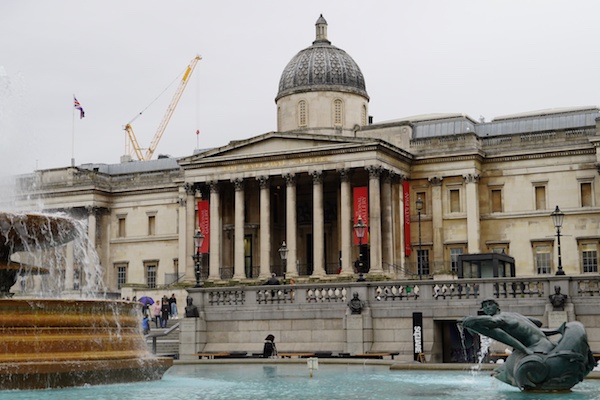
7. The Mall
This is the Queen’s personal driveway leading up to Buckingham Palace, flanked on either side by St. James’ Park (worth checking out for the pelicans) and Clarence House, the current residence of Prince Charles and Camilla, Duchess of Cornwall.
8. St. James’ Palace
This lesser-known sibling of Buckingham Palace is tucked just around the corner but is no less important! It was the site of a leper hospital until the reign of Henry VIII. If you want to write a letter to the Queen to complain about the weather or traffic, then you’d best send it here, as St. James’ Palace is the official seat of the royal court in Great Britain.
Bizarrely, this is the best place to watch the Changing of the Guard, the most pompous shift change in the world. After these soldiers have guarded the palace for 24 to 48 hours, they’ll march along to Buckingham Palace to change over to the New Guard. You’ll have a far better view of the event from here, and even get to enjoy the music before accompanying them to the Queen’s house.
The Changing of the Guard only occurs on certain days, which change throughout the year (check online). The guards leave from St. James’ Palace around 10:45 a.m. Get there a little early to enjoy the full spectacle!

9. Buckingham Palace
No self-guided walking tour in London would be complete without this iconic attraction. Known as Buckingham House until Queen Victoria moved here in 1837 to escape her controlling mother in Kensington, this palace has been the “official” London residence of the UK royals ever since.
With 775 rooms, 240 bedrooms, 78 bathrooms, a cinema, a swimming pool, an operating room, a post office and tennis courts, Queen Lizzie’s house is quite the crib—even if it is not her favorite palace.
Looking at the palace, you can always tell if the Queen is home by the flag on the top. When the Union Jack flies, she’s away; when the Royal Standard flutters, she’s most definitely there.
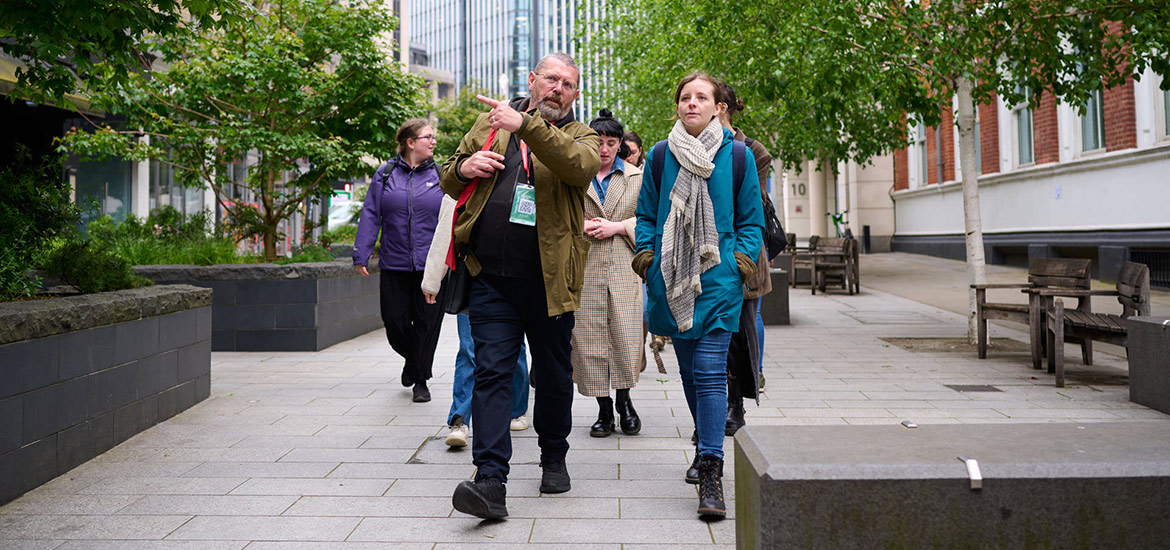
You must be hungry after all that history!
We hope you enjoyed our whirlwind self-guided walking tour in London—but like any good Devourer, you’re probably about ready for a bite to eat now. Within walking distance from Buckingham Palace, here are a few of our biggest recommendations:
- Shepherd Market is a hidden gem right in the heart of prestigious Mayfair, packed to the brim with little eateries. If you fancy an absolute blow-out of a lunch, try Kitty Fisher’s. This small establishment is an absolute must for British produce done right.
- For a more budget-friendly-yet-still-totally-London experience, head to Soho’s Chinatown. We suggest the big, steamy bowls of king prawn noodles at Hung’s, or Jinli Chinese for spicier Sichuan cuisine—their hot pots are out of this world.
Step into London’s rich history with our Complete Tower of London Tour. Experience the iconic Opening Ceremony, enjoy early access to the Crown Jewels, and embark on a scenic river cruise—all in one unforgettable morning.


